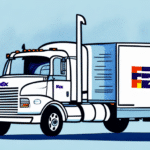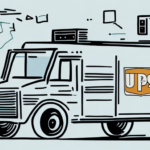Understanding FedEx Additional Handling
FedEx Additional Handling is a surcharge applied to packages that exceed certain size and weight limits or require special handling due to their dimensions or contents. This fee is levied in addition to the regular shipping charges and can significantly impact the overall cost of shipping large or heavy items. For businesses that rely on shipping large items through FedEx, understanding these fees is crucial for maintaining competitiveness and profitability.
When Are Additional Handling Charges Imposed?
FedEx imposes additional handling charges based on specific criteria related to the size, weight, and shape of the package. These charges vary depending on the service type selected, such as FedEx Ground or FedEx Express.
Size and Weight Limits
- FedEx Ground: Packages exceeding 70 pounds or 108 inches in length.
- FedEx Express: Packages surpassing 150 pounds or 119 inches in length.
Irregular Shapes and Special Handling
Packages that are not properly packaged or have irregular shapes—such as cylinders, triangles, or rolls—may also incur additional handling fees. These packages often require special equipment or handling procedures, leading to increased costs.
Calculating Additional Handling Charges
The calculation of FedEx Additional Handling charges depends on several factors, including the size, weight, service type, and destination of the package.
FedEx Ground Charges
- Packages over 70 pounds or 108 inches: $16.50 per package within the contiguous U.S.
- Packages exceeding 130 inches: $575 per package
FedEx Express Charges
- Packages over 150 pounds or 119 inches: $160 per package within the U.S. and Canada
- Packages exceeding 130 inches: $825 per package
These charges are subject to change based on factors like fuel surcharges and other applicable fees. For the most current rates, refer to the FedEx Shipping Rates.
Dimensions and Weight Limits for FedEx Packages
Understanding the specific size and weight limits for different FedEx services is essential to avoid unexpected additional handling fees.
FedEx Ground
- Maximum Weight: 150 pounds
- Maximum Length: 108 inches
FedEx Express
- Maximum Weight: 150 pounds
- Maximum Length: 119 inches
Packages exceeding these dimensions may require alternative shipping methods, such as freight services, which are designed to handle larger or heavier shipments more cost-effectively.
Tips to Avoid Additional Handling Fees
Implementing best practices can help minimize or eliminate additional handling fees when shipping with FedEx.
Accurate Measurement and Weight
- Use a reliable scale to measure the weight of your packages accurately.
- Measure all dimensions (length, width, height) and calculate the girth (2x width + 2x height).
Proper Packaging
- Use sturdy, double-walled cardboard boxes or crates suitable for the item's size and weight.
- Ensure items are well-cushioned with materials like bubble wrap, foam, or packing peanuts.
Optimal Service Selection
- Choose the most appropriate FedEx service based on the package’s size, weight, and destination.
- Compare rates and consider discounts offered for bulk or frequent shipments.
Use of FedEx Freight Services
For exceptionally large or heavy packages, consider using FedEx Freight services, which are tailored for bulk shipments and may offer more favorable pricing structures.
The Financial Impact of Additional Handling
Additional handling fees can significantly increase shipping costs, particularly for businesses that frequently send large or heavy packages.
Cost Accumulation Example
Consider a business shipping twenty large packages weekly via FedEx Ground. If ten of these require additional handling at $16.50 each, the weekly cost would be:
- 10 packages x $16.50 = $165 per week
- Annual Cost: $165 x 52 weeks = $8,580
Over time, these fees can erode profit margins. By implementing strategies to reduce these charges, businesses can achieve substantial cost savings.
Common Mistakes Leading to Additional Handling Fees
Avoiding specific errors can help prevent unnecessary handling charges:
- Underestimating Weight or Size: Inaccurate measurements can lead to unexpected fees.
- Poor Packaging: Using inadequate materials increases the risk of damage and special handling.
- Improper Labeling: Incorrect or missing labels can result in misclassification of packages.
- Non-Compliance with Regulations: Failing to adhere to hazardous materials guidelines can incur additional charges.
- Shipping Fragile Items Without Protection: Lack of proper cushioning can necessitate special handling.
Proper Measurement and Labeling of Large Packages
Ensuring accurate measurement and labeling is key to avoiding additional handling fees.
Steps to Measure
- Measure the length, width, and height of the package in inches, rounding up to the nearest whole inch.
- Calculate the girth by adding the length, twice the width, and twice the height.
- Compare the total dimensions against FedEx's size limits based on the selected service.
Labeling Guidelines
- Ensure labels clearly display the correct weight and dimensions.
- Use the official FedEx shipping label and securely attach it to the package.
- Include any necessary additional handling labels if applicable.
Best Practices for Packing Large Items
Proper packing techniques can prevent damage and reduce the likelihood of incurring additional handling fees.
- Use Durable Packaging: Opt for double-walled boxes or wooden crates for added strength.
- Internal Cushioning: Protect items with bubble wrap, foam inserts, or packing peanuts to absorb shocks.
- Secure the Contents: Utilize strapping or banding to keep items in place and prevent shifting during transit.
- Clearly Label Fragile Items: Use special handling labels to indicate the need for careful handling.
Disputing Additional Handling Charges
If you believe an additional handling fee has been incorrectly applied, FedEx provides a process to appeal or dispute the charge.
Steps to Appeal
- Contact FedEx Customer Service as soon as possible.
- Provide documentation such as the shipping label, invoice, and proof of package dimensions and weight.
- Explain the reason for the dispute clearly and provide any supporting evidence.
- Follow up as necessary and keep records of all communications.
Timeliness and thorough documentation are crucial for a successful appeal.
Comparing FedEx to Other Major Carriers
Understanding how FedEx's additional handling fees compare to those of other major carriers can help businesses make informed shipping decisions.
FedEx vs. UPS
- FedEx Ground: Additional handling fee of $16.50 for packages over 70 pounds or exceeding size limits.
- UPS: Similar additional handling fees apply, generally around $16.50 for oversized or heavy packages.
FedEx vs. USPS
- USPS: Imposes a Large Package Surcharge for items exceeding certain dimensions or weights, typically over 70 pounds.
Each carrier has its own set of rules and fee structures, so it's essential to compare their policies to select the most cost-effective and reliable option for your shipping needs.
Conclusion
Managing FedEx Additional Handling fees requires a thorough understanding of FedEx's policies on package size, weight, and special handling requirements. By implementing accurate measurement practices, using proper packaging, selecting the appropriate service level, and staying informed about FedEx’s fee structures, businesses can minimize additional costs and enhance their shipping efficiency. Additionally, comparing FedEx's offerings with other carriers can provide opportunities for cost savings and improved service reliability.






















